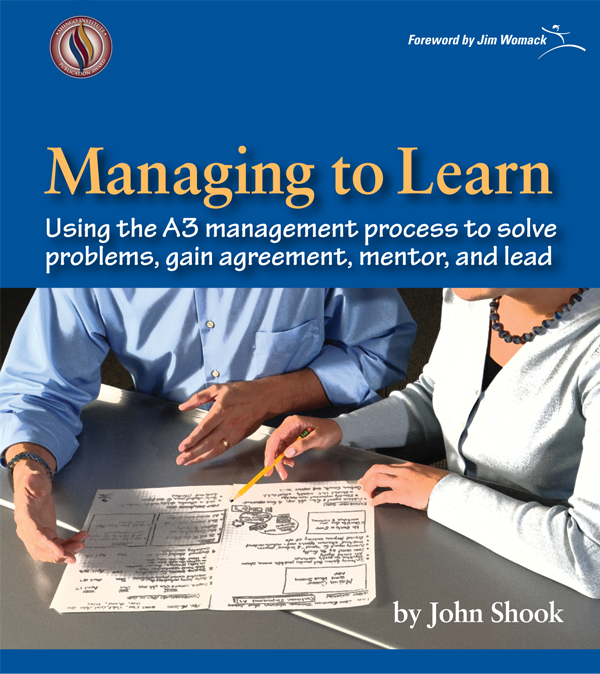Several hundred managers and continuous improvement professionals attended the recent Lean Enterprise Institute webinar “Beyond Problem-Solving: Other Facets of the A3 Process You Should Know and Practice” — and sent in scores of questions.
They were more than presenter David Verble could answer in an hour, so he’ll tackle them in follow-up articles on the Lean Post. Here is the first. (Make sure you are subscribed to the Lean Post to get alerts when we post new content.)
Q: What’s the difference between A3 and 8Ds and when or in what kind of problems do I need to use each?
David: The 8Ds or eight disciplines were developed by Ford in the 1980s as a team problem-solving approach. The A3 process is a Toyota-pioneered practice of getting the problem, analysis, corrective actions, and action plan on a single sheet of large (A3) paper, often with the use of graphics. The main difference is that the 8Ds, summarized below, are oriented toward organizing and leading a team through a structured problem-solving process.
The 8Ds (which start with plan for solving the problem; determine prerequisites):
- Form a team with product or process knowledge
- Describe the problem in quantifiable terms such as what, where, how many, etc.
- Implement containment actions to isolate the problem from customers.
- Determine and verify all applicable causes
- Select and verify permanent corrections
- Implement the best corrective actions
- Take actions to prevent the problem from recurring
- Recognize and congratulate the team
By the way, I like the term “corrective actions.” I think it allows for more options than “countermeasures” because it’s broader and includes countermeasures plus temporary actions.
A Report Is Just a Report
It’s important to remember that 8D reports and A3 reports describe the problem-solving after it has happened. Filling out the reports does not — in either case — do the problem-solving. You can use the reports to document your progress, but you don’t do the problem-solving by completing the report. You must do the problem-solving work before you enter anything in the reports.
There is a similarity between the 8Ds and the problem-solving process used by Toyota’s quality circles, which follow a cycle of forming teams and clarifying roles. But the 8Ds shouldn’t be confused with Toyota’s eight-step problem-solving process, which is not oriented toward teams.
Toyota’s 8-Step Process:
- Clarify the problem
- Breakdown the problem
- Set a target
- Analyze the root cause
- Develop countermeasures
- Implement countermeasures
- Monitor the process and results
- Standardize successful processes
The process starts with clarifying the problem, which is essentially grasping the problem situation, understanding what’s going on, and pinpointing the problem. The next step, breaking down the problem, is a key feature that is unique to Toyota’s problem-solving process. I’m not aware of another method that has this emphasis on identifying the problem as a gap in performance and then examining the work in the underperforming process or procedure to learn what is contributing to the gap.
The A3 Emphasis
If you read Managing to Learn, which is about how to use the A3 problem-solving process, middle manager character Desi Porter ultimately captures the current flow of a language translation process, which had caused a host of problems and created many more for the operation. He leads people in the process of agreeing on a future-state workflow that eliminates the problems.
As part of the process, you may have to — as Porter did — collect data and sort out the different types of defects or delays. That’s part of breaking down the problem, but sooner or later, you’re going to end up examining the process or procedure that has the issues in timing or delivery that you’re concerned about. And you are going to look for the specific things that are not working as they should in the workflow resulting in that performance gap. That’s what Toyota means by “breakdown the problem.”
In that way, it is like using value- stream mapping. First, you visualize the current workflow, identify the things about the way the work is being done that are affecting flow and timing, and then decide what changes need to be made to create a better performing future-state process.
I’m obviously biased, but I think the A3 process goes into a depth of problem-solving thinking that most other methods don’t. For instance, I don’t believe the 8D process goes as deep into monitoring results or checking what happened during execution, reflection, and making decisions on next steps: should you standardize, continue problem-solving, or start over? In other words, it does not seem to put the kind of emphasis on completing the plan-do-check-adjust (PDCA) cycle that A3 problem-solving and Toyota’s eight-step problem-solving do.
The Big Difference Between A3 and 8D
I have seen both approaches used successfully with most kinds of problems. I saw a variation of 8D used effectively at NUMMI, the Toyota-General Motors joint-venture plant in California. It was an effective means of engaging teams of operators in dealing with problems in the scope of their work. A simplified A3 process was the method used by Toyota Quality Circles. In fact, the A3 format originated as a tool for quality circles to report their problem-solving work to management.
The biggest difference in how the two methods are used that I see is in the scope of problems they are used to tackle. The 8D process seems to be more frequently used at the operational and staff levels to investigate and resolve problems within their work environments.
The A3 problem-solving process and the A3 report — at least as they are done in Toyota — are most often used for management level problems which are often cross-functional or strategic.
After starting out as a report format for quality circles, the A3 was taught to Toyota managers to level up their PDCA problem-solving thinking and skills. (See the Lean Posts How the A3 Process Developed to Help Build Better Managers Parts 1 and 2 by John Shook and Isao Yoshino for more information).
In Toyota, the A3 format is used as a communication and reporting tool in strategy deployment, multi-leveling planning for major projects, cross-functional process improvement initiatives (such Porter’s translation project), and performance improvement efforts at the department, value stream, operating unit, and group levels. It is the primary tool for leading and managing the many organizational change, improvement, and problem-solving processes based on the PDCA cycle.
Keep Learning
- Watch the webinar with David Verble.
- For a deep-dive into the A3 problem-solving method, register for the comprehensive online workshop “Managing to Learn Remotely” with LEI Coach David Verble. Learn more about the curriculum and enroll.








The difference is how they do cause finding.